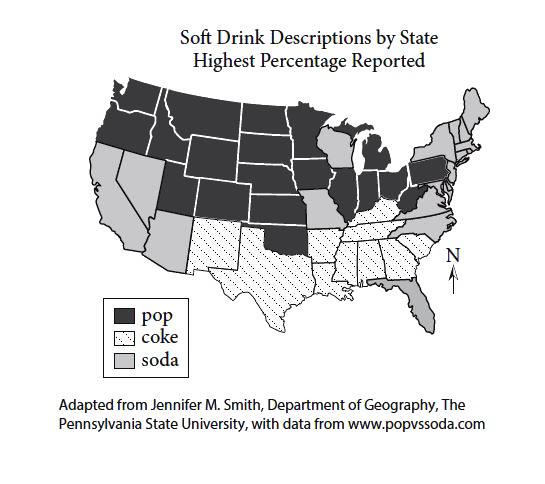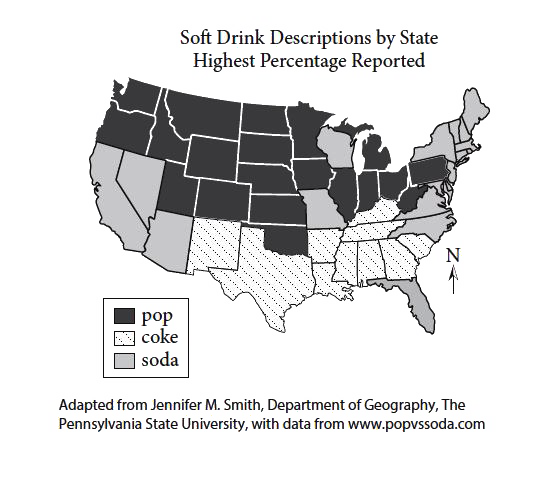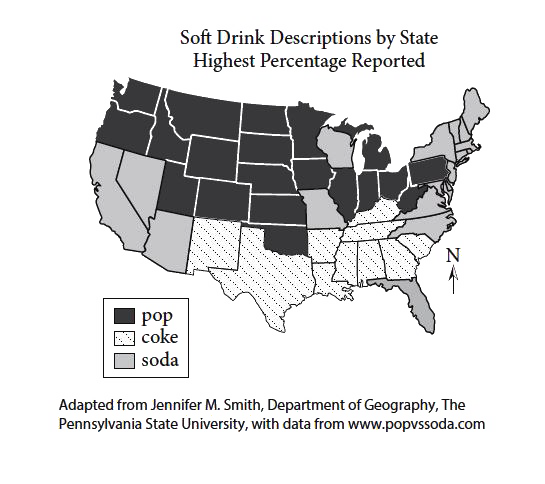In a certain city there are 30 colleges. Each college has 15 peons, 6 clerks, 1 typist and 1 section officer. Express the given information as a column matrix. Using scalar multiplication, find the total number of posts of each kind in all the colleges.
To solve the problem, we need to express the given information about the number of posts in each college as a column matrix and then use scalar multiplication to find the total number of posts in all the colleges.
Step 1: Represent the information as a column matrix
We know that each college has:
- 15 peons
- 6 clerks
- 1 typist
- 1 section officer
We can represent this information as a column matrix A:
A=⎡⎢
⎢
⎢⎣15611⎤⎥
⎥
⎥⎦
Step 2: Use scalar multiplication to find the total number of posts
Since there are 30 colleges, we need to multiply the column matrix A by the scalar 30:
Total=30×A=30×⎡⎢
⎢
⎢⎣15611⎤⎥
⎥
⎥⎦
Step 3: Perform the scalar multiplication
Now we will multiply each entry in the column matrix A by 30:
Total=⎡⎢
⎢
⎢⎣30×1530×630×130×1⎤⎥
⎥
⎥⎦
Calculating each entry:
1. 30×15=450
2. 30×6=180
3. 30×1=30
4. 30×1=30
So, the resulting column matrix for the total number of posts is:
Total=⎡⎢
⎢
⎢⎣4501803030⎤⎥
⎥
⎥⎦
Final Result
The total number of posts of each kind in all the colleges is:
- Peons: 450
- Clerks: 180
- Typists: 30
- Section Officers: 30
We know that each college has:
- 15 peons
- 6 clerks
- 1 typist
- 1 section officer
⎢
⎢⎣15611⎤⎥
⎥
⎥⎦
Since there are 30 colleges, we need to multiply the column matrix A by the scalar 30:
⎢
⎢⎣15611⎤⎥
⎥
⎥⎦
Now we will multiply each entry in the column matrix A by 30:
⎢
⎢⎣30×1530×630×130×1⎤⎥
⎥
⎥⎦
2. 30×6=180
3. 30×1=30
4. 30×1=30
⎢
⎢⎣4501803030⎤⎥
⎥
⎥⎦
The total number of posts of each kind in all the colleges is:
- Peons: 450
- Clerks: 180
- Typists: 30
- Section Officers: 30
Topper's Solved these Questions
Similar Questions
A finance company has offices located in every division,
every district and every taluka in a certain state in India.
Assume that there are five divisions, thirty districts and
200 talukas in the state. Each office has one head clerk,
one cashier, one clerk and one peon. A divisional office
has, in addition, one office superintendent, two clerks,
one typist and one peon. A district office, has in
addition, one clerk and one peon. The basic monthly
salaries are as follows :
Office superintendent Rs 500, Head clerk Rs 200, cashier Rs 175, clerks and typist
Rs 150 and peon Rs 100. Using matrix notation find
The total number of posts of each kind in all the offices
taken together,
View SolutionA finance company has offices located in ewery division,
every didtrict and every taluka in a certain state in India.
Assume that there are five divisions, thirty districts and
200 talukas in the state. Each office has one head clerk,
one cashier, one clerk and one peon. A divisional office
has, in addition, one office superntendent, two clerks,
one typist and one poen. A district office, has in
addition, one clerk and one peon. The basic monthly
salaries are as follows :
Office superintendernt Rs 500, Head clerk Rs 200, cashier Rs 175, clerks and typist
Rs 150 and peon Rs 100. Using matrix motation find
the total basic monthly salary bill of each kind of office
View Solution
Knowledge Check
You Are Where You Say
Research on regional variations in English-language use has not only yielded answers to such life-altering questions a show people in different parts of the United States refer to carbonated beverages (“soda”? “pop”? “coke”?) it also illustrate show technology can change the very nature of research. While traditional, human-intensive data collection has all but disappeared in language studies, the explosion ofsocial media has open edne wave nues for investigation. [1] Perhaps the epitome of traditional methodology is the Dictionary of American Regional English, colloquially known as DARE. [2] Its fifth and final alphabetical volume—ending with “zydeco”— released in 2012, the dictionary represents decade so far duous work. [3] Overa six-year period from 1965 to 1970, university graduate students conducted inter views in morethan a thousand communities across the nation. [4] Their goal was to determine what names people used for such every day object sand concepts as a submarine sandwich.
(a “hero” in New York City but a “dagwood”in many parts of Minnesota, Iow a, and Colorado) and a heavy rainstorm(variously a “gullywasher,” “pour-down,” or “stumpmover”). [5] The work that dictionary founder Frederic G. Cassidy had expected to be finished by 1976 was not,in fact, completed in his life time. [6] The wait did not dampen enthusiasm among scholars. Scholars consider the work a signal achievement in linguistics. Not all research into regional English varieties requires such time, effort, and resources, however. Today’s researchers have foundth at the veritable army of trained volunteer straveling the country conducting face-to- face inter view scan sometimes be replaced by another army the vastarray of individuals volunteering details about their lives— and,in advertently, their language— through social media. Brice Russ of Ohio State University,for example, has employed software to sort through postings on one social media cite in search of particular words and phrases of interest as well as the location from which users are posting. From these data,
he was able, among other things, to confirm regional variations in people's terms for soft drinks. As the map shows. ,“soda” is comm only heard in the middle and western portions of the United States, “pop” is frequently used in many southern states, and “coke”ispre dominant in the north eastern and south west region sbutused else where as well. As interesting as Russ’s findings are, though, they’re true value lies in their reminder that the Internet is not merelya sophisticated tool for collecting data but is also itself a rich source of data

The writer wants to convey an attitudeof genuine interest and to avoid the appearance of mockery. Which choice best accomplishes this goal?ANo ChangeBgalvanizingCintriguingDweirdYou Are Where You Say
Research on regional variations in English-language use has not only yielded answers to such life-altering questions a show people in different parts of the United States refer to carbonated beverages (“soda”? “pop”? “coke”?) it also illustrate show technology can change the very nature of research. While traditional, human-intensive data collection has all but disappeared in language studies, the explosion ofsocial media has open edne wave nues for investigation. [1] Perhaps the epitome of traditional methodology is the Dictionary of American Regional English, colloquially known as DARE. [2] Its fifth and final alphabetical volume—ending with “zydeco”— released in 2012, the dictionary represents decade so far duous work. [3] Overa six-year period from 1965 to 1970, university graduate students conducted inter views in morethan a thousand communities across the nation. [4] Their goal was to determine what names people used for such every day object sand concepts as a submarine sandwich.
(a “hero” in New York City but a “dagwood”in many parts of Minnesota, Iow a, and Colorado) and a heavy rainstorm(variously a “gullywasher,” “pour-down,” or “stumpmover”). [5] The work that dictionary founder Frederic G. Cassidy had expected to be finished by 1976 was not,in fact, completed in his life time. [6] The wait did not dampen enthusiasm among scholars. Scholars consider the work a signal achievement in linguistics. Not all research into regional English varieties requires such time, effort, and resources, however. Today’s researchers have foundth at the veritable army of trained volunteer straveling the country conducting face-to- face inter view scan sometimes be replaced by another army the vastarray of individuals volunteering details about their lives— and,in advertently, their language— through social media. Brice Russ of Ohio State University,for example, has employed software to sort through postings on one social media cite in search of particular words and phrases of interest as well as the location from which users are posting. From these data,
he was able, among other things, to confirm regional variations in people's terms for soft drinks. As the map shows. ,“soda” is comm only heard in the middle and western portions of the United States, “pop” is frequently used in many southern states, and “coke”ispre dominant in the north eastern and south west region sbutused else where as well. As interesting as Russ’s findings are, though, they’re true value lies in their reminder that the Internet is not merelya sophisticated tool for collecting data but is also itself a rich source of data

Which choice most effectively concludes the sentence and paragraphANo ChangeBwhere we can earn what terms people use to refer to soft drinks.Ca useful way to stay connected to friends, family, and colleagues.Dhelpful to researchers.You Are Where You Say
Research on regional variations in English-language use has not only yielded answers to such life-altering questions a show people in different parts of the United States refer to carbonated beverages (“soda”? “pop”? “coke”?) it also illustrate show technology can change the very nature of research. While traditional, human-intensive data collection has all but disappeared in language studies, the explosion ofsocial media has open edne wave nues for investigation. [1] Perhaps the epitome of traditional methodology is the Dictionary of American Regional English, colloquially known as DARE. [2] Its fifth and final alphabetical volume—ending with “zydeco”— released in 2012, the dictionary represents decade so far duous work. [3] Overa six-year period from 1965 to 1970, university graduate students conducted inter views in morethan a thousand communities across the nation. [4] Their goal was to determine what names people used for such every day object sand concepts as a submarine sandwich.
(a “hero” in New York City but a “dagwood”in many parts of Minnesota, Iow a, and Colorado) and a heavy rainstorm(variously a “gullywasher,” “pour-down,” or “stumpmover”). [5] The work that dictionary founder Frederic G. Cassidy had expected to be finished by 1976 was not,in fact, completed in his life time. [6] The wait did not dampen enthusiasm among scholars. Scholars consider the work a signal achievement in linguistics. Not all research into regional English varieties requires such time, effort, and resources, however. Today’s researchers have foundth at the veritable army of trained volunteer straveling the country conducting face-to- face inter view scan sometimes be replaced by another army the vastarray of individuals volunteering details about their lives— and,in advertently, their language— through social media. Brice Russ of Ohio State University,for example, has employed software to sort through postings on one social media cite in search of particular words and phrases of interest as well as the location from which users are posting. From these data,
he was able, among other things, to confirm regional variations in people's terms for soft drinks. As the map shows. ,“soda” is comm only heard in the middle and western portions of the United States, “pop” is frequently used in many southern states, and “coke”ispre dominant in the north eastern and south west region sbutused else where as well. As interesting as Russ’s findings are, though, they’re true value lies in their reminder that the Internet is not merelya sophisticated tool for collecting data but is also itself a rich source of data
 ANo ChangeBand also illustratesCbut also illustratesDillustrating
ANo ChangeBand also illustratesCbut also illustratesDillustrating
A finance company has offices located in ewery division,
every didtrict and every taluka in a certain state in India.
Assume that there are five divisions, thirty districts and
200 talukas in the state. Each office has one head clerk,
one cashier, one clerk and one peon. A divisional office
has, in addition, one office superntendent, two clerks,
one typist and one poen. A district office, has in
addition, one clerk and one peon. The basic monthly
salaries are as follows :
Office superintendernt Rs 500, Head clerk Rs 200, cashier Rs 175, clerks and typist
Rs 150 and peon Rs 100. Using matrix motation find
the total basic monthly salary bill of all the offices taken
together.
View SolutionA particular resistance wire has a resistance of 3.0 ohm per metre. Find :
The total resistance of three lengths of this wire each 1.5 m long, joined in parallel.
View SolutionAn examination consists of 10 multiple choice questions, where each question has 4 options, only one of which is correct. In every question, a candidate earns 3 marks for choosing the correct opion, and -1 for choosing a wrong option. Assume that a candidate answers all questions by choosing exactly one option for each. Then find the number of distinct combinations of anwers which can earn the candidate a score from the set {15, 16,17,18, 19, 20}.
View SolutionAn object O (real ) is placed at focus of an equi-biconvex lens as shown in. figure-I . The refractive index of lens is μ=1.5 and the radius of curvature of either suface of lens is R . The lens is surronded by air . In each statement of column-I some changes are made to situation given above and information regarding final image formed as a result is given in column-II . The distance between lens and object is unchanged in all statements of column-I. match the statements in column-I with resulting image in column-II.
_E01_097_Q01.png)
_E01_097_Q02.png)
View SolutionTwo mirros are inclinded by an angle 30∘. An object is placed 10∘ with the mirror M1. Find the positons of first two images formed by each mirror. Find the total number of images using (i) direct formula and (ii) counting the images.
View Solution
